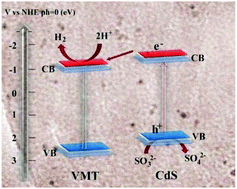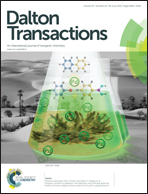Stable hydrogen generation from vermiculite sensitized by CdS quantum dot photocatalytic splitting of water under visible-light irradiation
Abstract
CdS quantum dot/vermiculite (CdS/VMT) nanocomposites have been synthesized via a facile one-step method and characterized by X-ray diffraction, UV-vis diffuse reflection spectroscopy, X-ray photoelectron spectroscopy, and transmission electron microscopy. The photocatalytic hydrogen generation activities of these samples were evaluated using Na2S and Na2SO3 as sacrificial reagents in water under visible-light illumination (λ ≥ 420 nm). The most important aspect of this work is the use of natural products (VMT) as host photocatalysts. The effect of CdS content on the rate of visible light photocatalytic hydrogen generation was investigated for different CdS loadings. The synergistic effect of VMT and CdS quantum dots (QDs) leads to efficient separation of the photogenerated charge carriers and, consequently, enhances the visible light photocatalytic hydrogen production activity of the photocatalyst. The CdS/VMT composite with an optimal ratio of 5% exhibits the highest hydrogen evolution rate of 92 μmol h−1 under visible light irradiation and the highest apparent quantum efficiency of 17.7% at 420 nm. A possible photocatalytic mechanism of the CdS/VMT nanocomposite is proposed and corroborated by photoelectrochemical curves.


 Please wait while we load your content...
Please wait while we load your content...